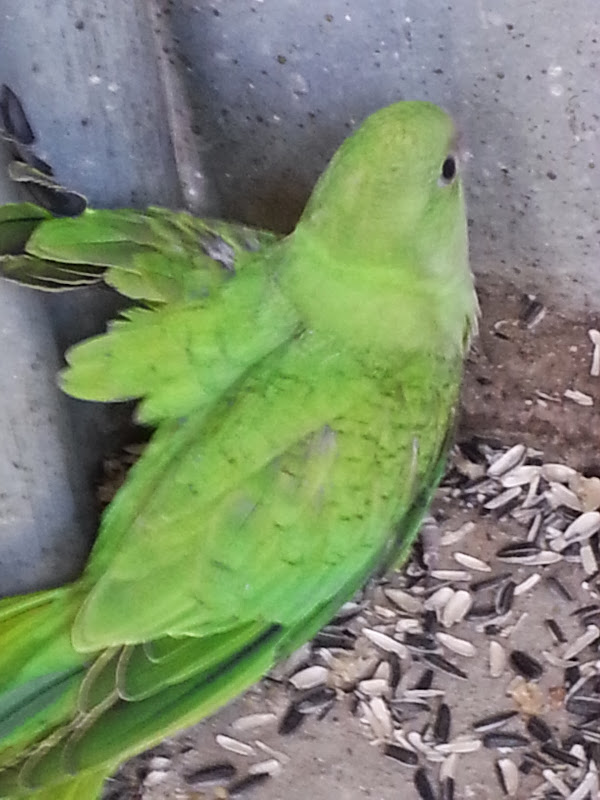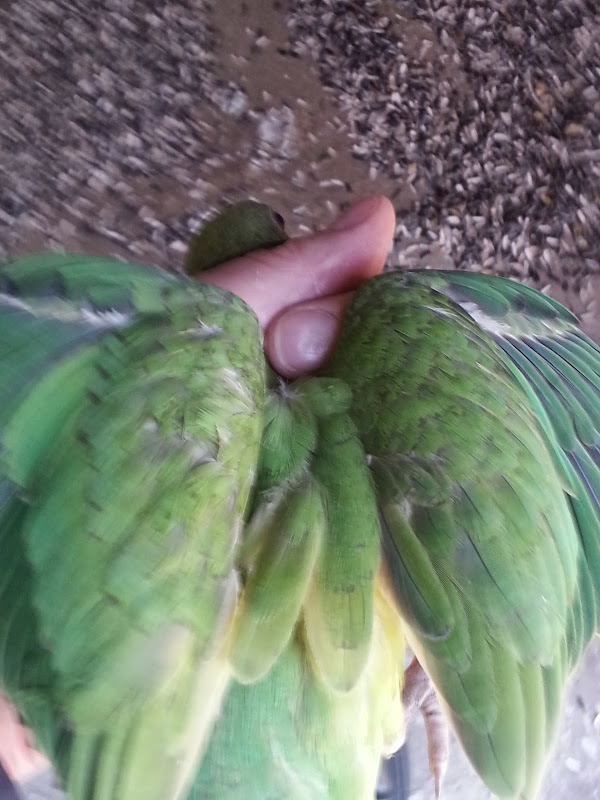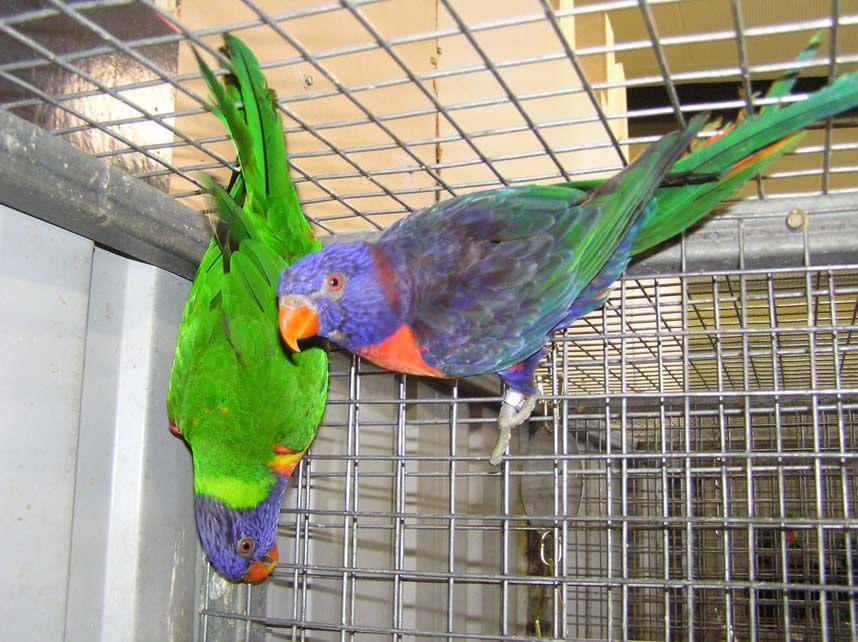




Moderator: Mods











Recio wrote:Hi SCB,
Your bird dysplays those markings following a patched psittacin pattern (or a turquoise pattern): increased amount on the coverts of the wings and head, time dependent expression with markings increasing with age and an "inside the feather" distribution pattern typical of psittacins (higher amount on the tip of the feather). It is in these areas where psittacin concentration is maximal and fluorescent psittacin is higher. It is also in these areas where red psittacin is more likely to be produced (threshold theory). The red psittacin in a bird owing melanin will appear as a brown/grey colour (your odd markings = blue + red). If you want to test for the presence of red psittacin you should pair your feamle to a SL-ino cock in order to get red-ino females on the first generation.
Do you know if any of the parents of your bird had also those markings? Do you know if the parents are/carry pied mutation(s)? Red birds seem to follow a dominant pattern and, thus, one of the parents should have shown those markings.
Try to get a look at your bird under uv and compare it to a normal green. Probably her fluorescence will be higher due to increased psittacin production and probably the odd markings will not be fluorescent since no one fluorescent red psittacin has ever been reported.
Regards
Recio
@Peter: I can not see clearly the markings of your bird but if it belongs to your red line ... probably it is a red bird.
Hi Willy,trabots wrote:The feathers are clearly ragged at the ends. They are not mutant feathers they are damaged feathers IMO. I have had plenty of these feathers over the years.


This is what red suffusion in a green bird looks like Recio.I can not see clearly the markings of your bird but if it belongs to your red line ... probably it is a red bird.

Hi Willy,trabots wrote:This is what red suffusion in a green bird looks like Recio.
Took him for a ride and let him slither away. I would have liked to keep him however here in Oz you can get a pretty big fine for keeping native species without permits etc.What did you do to the python?